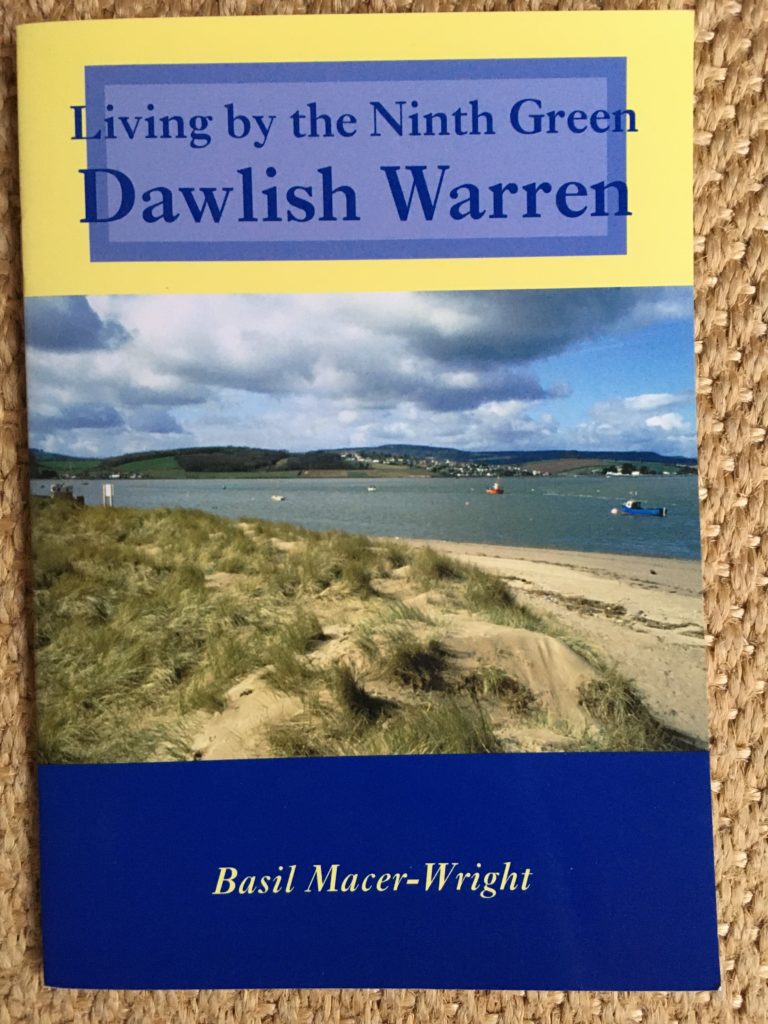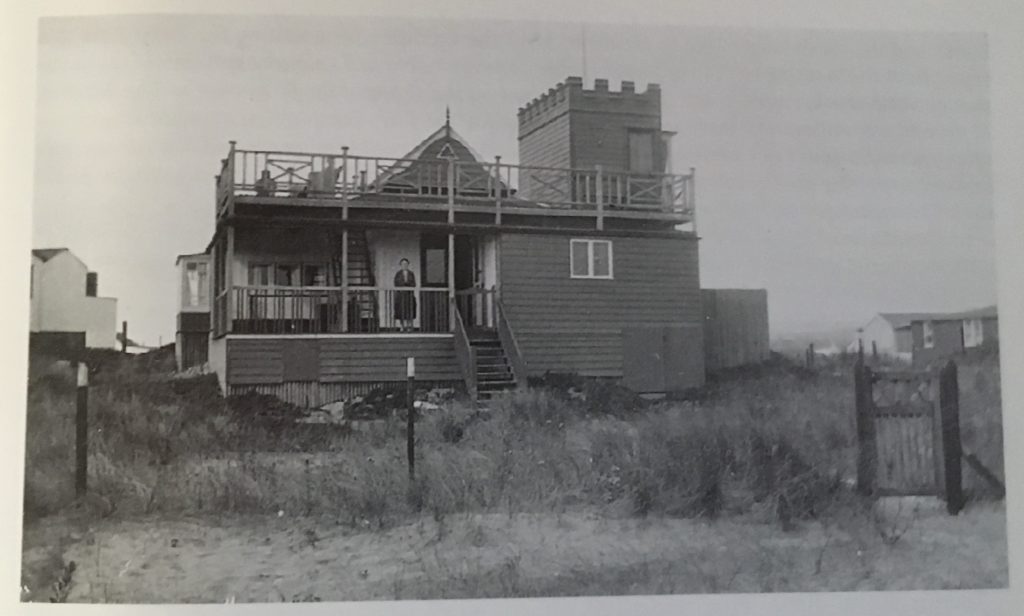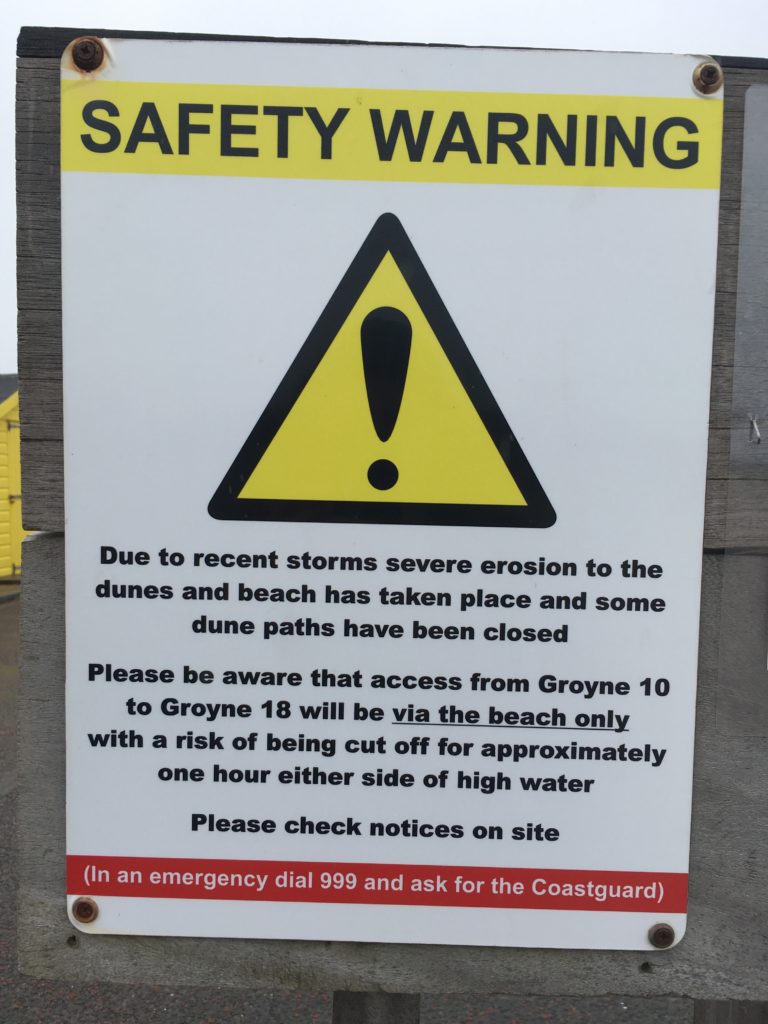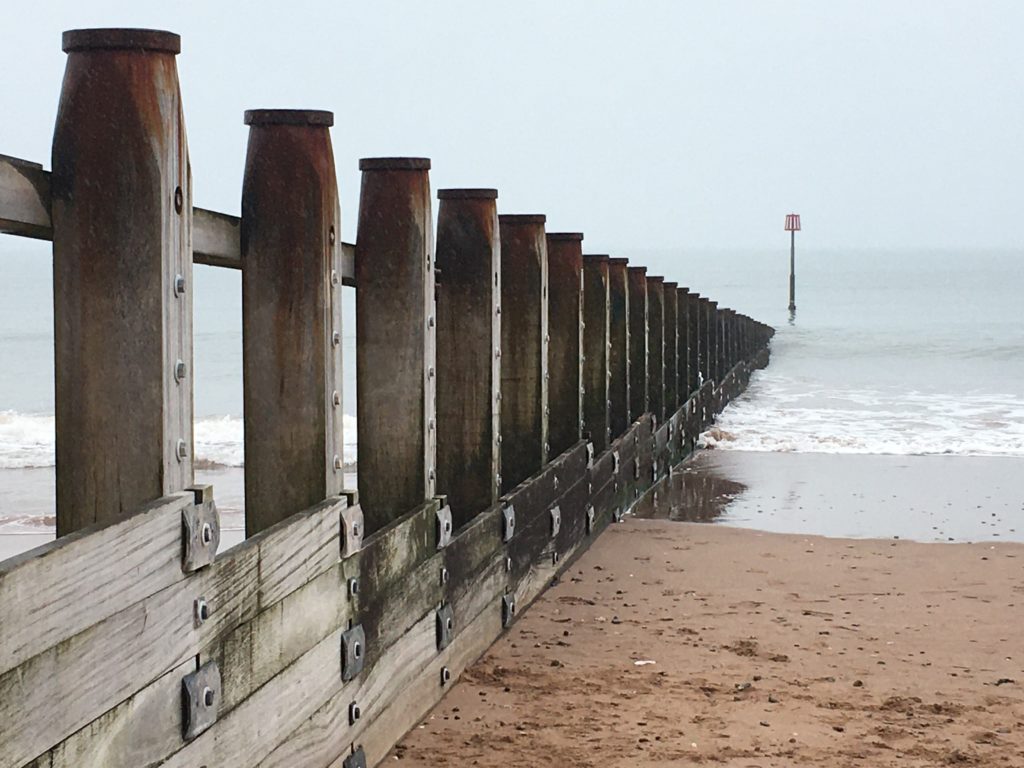Mark Brend walks to the end of Dawlish Warren in search of a house that once was.

Usually, in November, even though it’s out of season, the amusement arcades at Dawlish Warren are open. Today they are shut up, on account of pandemic restrictions. Just one refreshment kiosk is trading, selling donuts, coffee and pizza. Even so, there are cars in the car park and at the western, developed end of the Warren, plenty of people. Dog walkers, a few surfers, grandparents and pre-school children in winter coats, sitting on the beach making sandcastles.
I’m not here for the amusements or the donuts or even the beach. I’m here to walk to the end of the Warren, a sandy, marram-grassed spit that reaches one and a half miles east across the Exe estuary, like an arm stretching out to Exmouth on the other side. Old maps and photographs taken from biplanes in the 1920s reveal it as a mutable landscape, which the sea perpetually remodels. There is no guarantee at all that it will still be here in 10 years’ time.
The Warren gets its name from the rabbits that were farmed here centuries ago. They’re still around, living wild. I recall my father telling me when I was a boy that dead and dying rabbits were strewn across the Warren in the 1953 myxomatosis outbreak. Perhaps the population never fully recovered, because you don’t see much of them now. What you do see is a lot of wading birds. Most likely the only people you’ll encounter in the more remote parts of the Warren are there for the birds.

I’ve chosen this walk on account of a short book by Basil Macer-Wright, called Living By The Ninth Green: Dawlish Warren (2004). As the title indicates, there’s a golf course on the Warren, set back from the beach towards the railway line that runs along the coast to Dawlish and further west, forever threatened by the sea. It’s the ‘living’ bit of the title that interests me, though, not the golf. Macer-Wright and his young family were the last occupants of what was once a thriving settlement of dwellings at the far end of the Warren. The Macer-Wrights lived in a ramshackle structure called White Shanty, surrounded by lupins, from 1946 until 1960. Basil’s account is an almost painfully evocative tale of a vanished, gas-lit life: morning sea swims from March to October, sailing in a dinghy in the evenings over to pubs at Cockwood and Starcross, cycling across the Warren in the morning in time to catch the train into Exeter for work.
By the time the Macer-Wrights arrived the settlement was already in decline from its inter-war heyday. Then there were dozens of dwellings; some holiday homes, others occupied throughout the year. Many were simple shacks and chalets, but there were more elaborate two-storey dwellings, including one with a crenelated tower and another with a tennis court in the garden. At one point, incredibly, there were two shops as well.


I was planning to walk down to where I knew White Shanty and the other buildings once stood, to see what remained of them. After all, they were still standing in living memory. But even before I set out I knew it was a fool’s errand. I’d been down there before, and it’s just sand and grass and the birds. Not a trace of habitation remains. With its groynes and gabions and grass planting initiatives, the Warren is a monument to human attempts to bargain with the waves. The sea seems to humour these efforts for a while, before asserting itself. That’s how it was with White Shanty and all the other dwellings. One by one the high tides and the wind took them away until now there is not a post or a brick to be seen. Was White Shanty real? All that remains to contend for its existence are Basil Mercer-Wright’s brief memoir and some old photographs.

Standing there at the end of the Warren I experience, as I knew I would, a nostalgia for a life I never knew. It’s an oddly elusive sensation, on one level meaningless yet feeling like the truest of things. All is still and quiet. The tide is right out and it’s easy to imagine you could walk over to Exmouth, just a few hundred yards away. But you can’t. The channel is deep, the tide perilous. A seal swims by on its back, its grunts and splashes breaking the silence. I can see two men working on a dredger in the estuary, but no-one else at all. I stand here and think for a while about White Shanty. The tantalising juxtaposition of the vanished-without-a-trace past with the knowledge that it was right here, in the age of rock’n’roll and television and air travel. It both is and is not a remote kingdom.

Walking back through the Warren, I cross an area behind the sand dunes where hundreds of beach huts once stood. Not homes like White Shanty, but little sheds where you made tea on primus stoves and got changed for swimming. Family friends had one and I recall visits as a child, in the late 60s. They had a sit-up-and-beg Ford Popular, a 1930s design that remained in production until 1959. That car might have been less than 10 years old, but it was an anachronism even then. This is more familiar territory. A remembered, not an imagined past. The family in question lived in a terraced house in Exeter. In the side return there was a big cage, home to their pet monkey. Whenever we went to tea there were cakes, but we had to eat a slice of bread and butter before we could start on them.
Then further back, to one of my earliest memories. A little further along the beach toward Dawlish, by the Red Rock, where the train runs right alongside the beach. A day with my paternal grandparents. I must have been very young, because my grandfather died when I was five. He was standing on the beach in collar and tie with his trousers rolled up. We drove home in his Austin A35 van, me in the back. No seats, let alone seatbelts.
*
Mark Brend is a writer of fiction. He also writes about and makes music. Follow him on Twitter / visit his website.